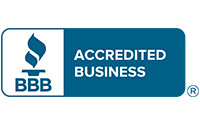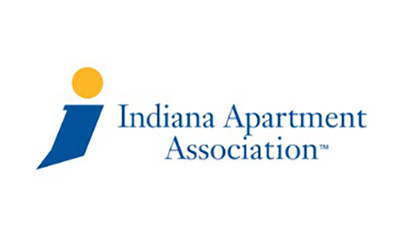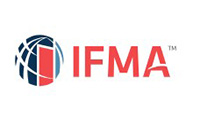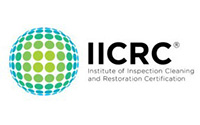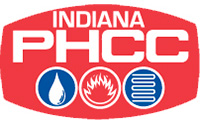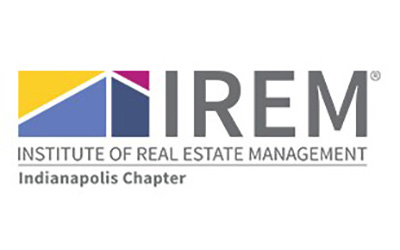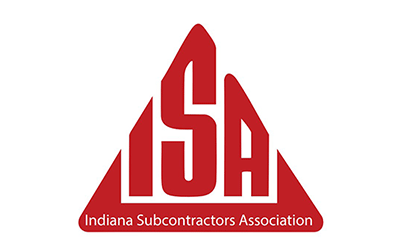Water damage can have devastating effects on your home and belongings. Whether it’s from a burst pipe, a leaking roof, or a natural disaster, the impacts can be extensive. In this section, we will delve into the various consequences of water damage, focusing on the items that are most likely to get ruined.
When water infiltrates your living space, it can wreak havoc on a wide range of valuable assets. It’s essential to recognize the potential risks and take immediate action to minimize the damage. Let’s explore the different categories of belongings that are susceptible to water damage and discuss strategies to protect and restore them.
Key Takeaways:
- Water damage can cause significant destruction to your belongings and home.
- Common items at risk include electronics, furniture, appliances, fabrics, and documents.
- Understanding the effects of water damage on each category is crucial for effective mitigation.
- Swift action is crucial to prevent further deterioration and salvage what you can.
- Seek professional help if needed to ensure the best outcome.
Assessing the Damage: Common Household Items
When water infiltrates your home, it can cause extensive damage to various common household items. Understanding the impact on electronics, furniture, appliances, fabrics, and documents is crucial for effective mitigation and restoration. In this section, we will delve into each of these categories and explore how water damage affects them.
Electronics: Water and electronics are a dangerous combination. Water intrusion can lead to electrical shorts and corrosion, rendering your devices inoperable. Taking immediate action is essential to salvage or replace water-damaged electronics.
Furniture: Water-soaked furniture is prone to structural damage and can become breeding grounds for mold and mildew. Quick response and proper drying techniques can greatly minimize the impact on your beloved furniture pieces.
Appliances: When exposed to water, appliances can malfunction, posing safety hazards and risking costly repairs or replacements. Identifying and addressing water damage in appliances promptly is crucial to prevent further damage and restore their functionality.
Fabrics: Fabrics, including upholstery and carpets, can absorb water, leading to waterlogged and potentially irreparable damage. Swift action and professional restoration services are vital in mitigating the effects, preventing mold growth, and preserving your beautiful fabrics.
Documents: Water-damaged documents, such as important papers and photographs, are fragile and susceptible to irreversible damage. Proper handling and assistance from document restoration professionals are essential in salvaging your valuable records and memories.
By understanding the specific effects of water damage on common household items, you can take proactive steps to mitigate the damage and protect your valuable possessions. Let’s now explore each category in detail.
Electronics and Water Damage
Water damage can have severe consequences for your electronic devices, posing a significant threat to their functionality and longevity. Understanding the effects of water on electronics, such as electrical shorts and corrosion, is crucial in mitigating further damage and determining whether your devices can be salvaged or need to be replaced.
Electrical shorts:
When water comes into contact with sensitive electronic components, it can cause electrical shorts. These shorts occur when water creates unexpected connections between circuits, leading to irregular current flow and potential malfunctions or total failures. Electrical shorts can occur immediately or after some time if the device isn’t thoroughly dried and cleaned.
Corrosion:
Water contains minerals and impurities that can corrode electronic components, such as circuit boards, connectors, and microchips. Corrosion gradually weakens the functionality of these parts, potentially rendering the device inoperable. Moreover, corrosion is an ongoing process and can continue even after the initial water damage has occurred.
To illustrate the risks of water damage to electronics, consider the following table:
| Effects of Water Damage on Electronics | Immediate Impact | Long-Term Impact |
|---|---|---|
| Electrical Shorts | Device malfunction or failure | Increased risk of ongoing issues and further damage |
| Corrosion | Potential damage to circuitry and components | Progressive deterioration of device functionality |
Please note that the table above is for illustrative purposes only and does not encompass all possible impacts of water damage on electronics.
It’s essential to avoid turning on or charging water-damaged electronic devices to prevent further damage. Instead, follow the necessary steps to dry and clean the devices or seek professional assistance to increase the chances of salvage.
Furniture, Appliances, and Water Damage
Water damage can wreak havoc on your furniture and appliances, causing significant deterioration and structural damage. Additionally, household appliances are prone to malfunctioning when exposed to water. It’s essential to understand the potential risks and take immediate action to minimize the impact of water damage on your valuable possessions.
When water-soaked furniture is not properly addressed, it can lead to irreversible damage. Upholstered pieces can become a breeding ground for mold and mildew, compromising their structural integrity. Wooden furniture may warp or swell, resulting in cracks or instability. In extreme cases, water damage can render furniture completely useless.
Similarly, household appliances are highly susceptible to malfunctioning when exposed to water. Water infiltration can cause electrical shorts, corrode internal components, and disrupt their normal functioning. Appliance malfunction not only results in inconvenience but also poses safety risks to you and your home.
Protecting your furniture and appliances requires prompt action. If your furniture is water-soaked, it’s crucial to remove excess moisture and dry it thoroughly to prevent further damage. You may need to consult a professional restoration service to salvage valuable pieces and prevent mold growth.
For appliances affected by water damage, immediately disconnect them from power sources and avoid turning them on until they have been inspected and repaired by a qualified professional. Attempting to use water-damaged appliances could lead to further damage or even electrical hazards.
By understanding the risks and taking preventive measures, you can mitigate the impact of water damage on your furniture and appliances. Regular maintenance, timely repairs, and investing in waterproofing solutions can help safeguard your valuable possessions and minimize the risks associated with water damage.
Fabrics and Documents: Vulnerable to Water Damage
When it comes to water damage, fabrics and documents are particularly vulnerable. Excess water exposure can lead to serious consequences for these valuable items in your home.
Waterlogged fabrics: Fabrics such as upholstery, carpets, and curtains can easily become waterlogged when exposed to excess water. This not only compromises their structural integrity but also creates the perfect environment for mold and mildew growth.
Mold growth: Mold and mildew thrive in damp conditions, and waterlogged fabrics provide an ideal breeding ground. If not addressed promptly, mold growth can not only damage your fabrics but also pose risks to your health.
Water-damaged documents: Important documents and papers are also at risk during water damage incidents. Water can cause documents to become damp, resulting in ink bleeding, paper warping, and overall degradation. Additionally, water-damaged documents may lead to the loss of valuable information or legal implications.
In order to mitigate the impact of water damage on fabrics and documents, it is crucial to take immediate action. Here are some strategies to effectively deal with these types of water damage:
- Remove the affected fabrics: If fabrics such as upholstery or carpets have been waterlogged, it is essential to remove them from the affected area as soon as possible. This will help prevent further damage and reduce the risk of mold growth spreading to other areas of your home.
- Professional cleaning: Seek the assistance of professional cleaners who specialize in water damage restoration. They have the expertise and equipment to effectively clean and dry water-damaged fabrics and documents, minimizing the chances of mold growth and preserving the integrity of your belongings.
- Document preservation: If your important documents have been water-damaged, take immediate steps to preserve them. Place them in a dry area with good airflow and avoid exposing them to direct sunlight. Consider consulting a professional document restoration service for specialized care.
- Mold remediation: If you notice mold growth on waterlogged fabrics or documents, it is crucial to address it promptly. Mold can spread rapidly and pose health risks, so consider hiring certified mold remediation experts to assess and remove the mold safely.
By taking these proactive measures, you can minimize the damage caused by waterlogged fabrics, prevent mold growth, and salvage your important documents. Remember that swift action is key when it comes to dealing with water damage.
| Effects of Water Damage on Fabrics and Documents | Prevention and Restoration Strategies |
|---|---|
| Waterlogging of fabrics | Remove affected fabrics Seek professional cleaning and drying services |
| Mold and mildew growth | Address moisture issues promptly Hire certified mold remediation experts |
| Damp and damaged documents | Preserve documents in a dry area with good airflow Consider professional document restoration services |
Conclusion
In conclusion, water damage can have devastating effects on a wide range of items in your home. Electronics, furniture, appliances, fabrics, and important documents are all vulnerable to the harmful impact of water. However, by understanding the potential risks and taking preventive measures, you can minimize the extent of the damage and protect your valuable assets.
Acting swiftly is crucial when dealing with water damage. Drying out wet electronics, furniture, and fabrics immediately can help prevent further deterioration and reduce the likelihood of mold growth. Similarly, addressing waterlogged documents promptly can increase the chances of salvaging important information.
While it is essential to handle minor water damage yourself, seeking professional help is recommended for more severe cases. Industry experts have the expertise and equipment to assess the extent of the damage, implement effective restoration techniques, and help you navigate insurance claims if necessary.
Remember, water damage can occur at any time, whether due to natural disasters, plumbing issues, or accidents. By staying vigilant, taking preventive measures, and addressing water damage promptly, you can safeguard your home and possessions from the devastating impact of water and maintain peace of mind.
FAQ
What are the impacts of water damage on my belongings?
Water damage can ruin a wide range of items in your home, including electronics, furniture, appliances, fabrics, and important documents. It is important to take immediate action to mitigate the damage and protect your valuable assets.
How does water damage affect electronics?
Water damage poses a significant threat to electronic devices. When exposed to water, electronics can experience electrical shorts and corrosion, rendering them inoperable. It is crucial to salvage or replace these devices promptly to prevent further damage.
What can happen to furniture and appliances during water damage?
Water damage can lead to the deterioration of furniture, causing structural damage and reducing its lifespan. Additionally, household appliances are susceptible to malfunctioning when exposed to water. Implementing mitigation strategies can help minimize the impact on your furniture and appliances.
Are fabrics and documents vulnerable to water damage?
Yes, fabrics such as upholstery and carpets can become waterlogged, which promotes the growth of mold and mildew. Water-damaged documents also require immediate attention to prevent further deterioration. Taking swift action and implementing proper drying techniques are essential in addressing these types of water damage effectively.
How can I protect my belongings from water damage?
To protect your belongings from water damage, it is crucial to take preventive measures such as installing proper drainage systems, sealing cracks in the foundation, and maintaining a functioning sump pump. It is also recommended to store valuable items in waterproof containers and elevate them in flood-prone areas.
When should I seek professional help for water damage restoration?
It is advisable to seek professional help for water damage restoration in cases of extensive damage, sewage contamination, or when you lack the necessary equipment and expertise to effectively mitigate the damage. Water damage restoration professionals can provide thorough assessments and reliable solutions to restore your property.

















